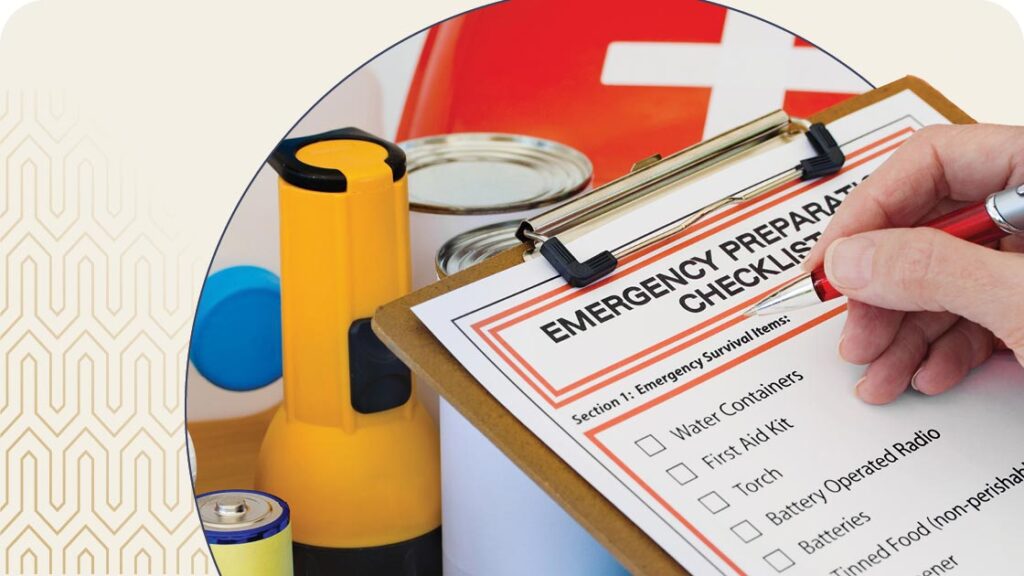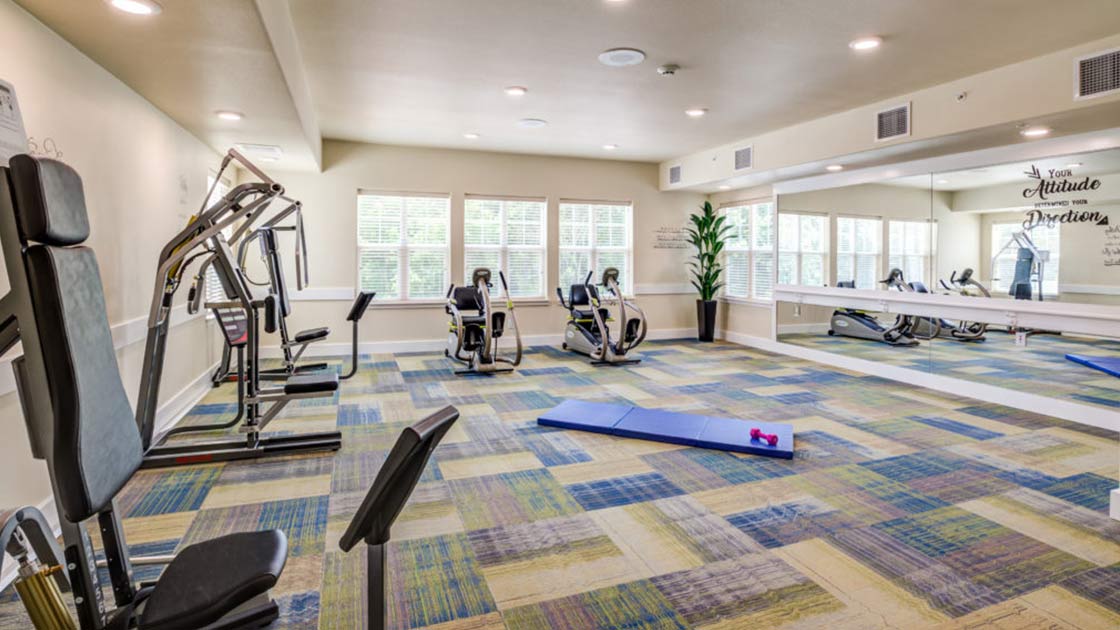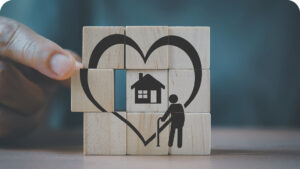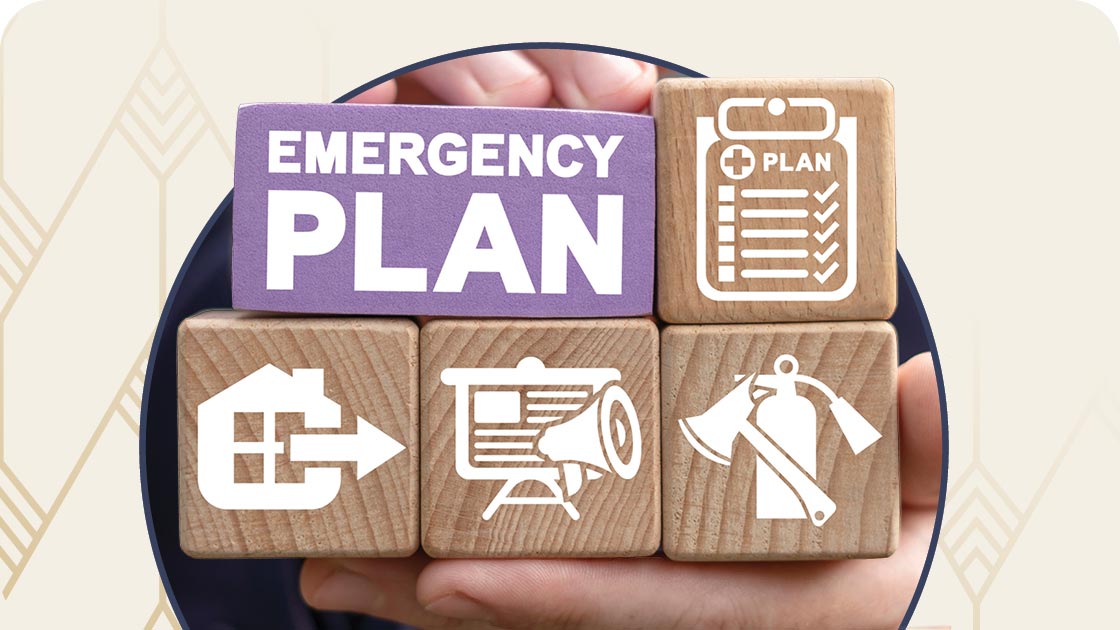Hurricanes. Tornadoes. Heat waves. Ice storms. How would you deal with any one of the many situations that require an emergency response? In addition to a cool head and quick thinking, you’ll benefit from an emergency preparedness plan that covers before, during and after an emergency or natural disaster.
Mobility impairment, medical conditions, cognitive difficulties and isolation make older adults less likely to successfully navigate these disasters. Depending on the enormity of the disaster, relief workers and first responders may not be able to help everyone right away. Even dependable support services such as caregivers, in-home health, and meal and prescription delivery may not be available during these times.
If you don’t already have an emergency preparedness plan in place for your loved one, the time to start is now. This blog will guide you through the five essentials of emergency preparedness for seniors:
- Understanding your risks
- Staying in touch and informed
- Creating personalized emergency preparedness plans
- Assembling an emergency kit
- Building a reliable support network
Statement of Fairness: Considering senior living options for yourself or a loved one? We’re here to help at every step. And even though we specialize in independent living communities, our goal is for YOU to find your best path to gracious retirement living, and part of how we achieve that is by providing reliable information on all types of senior living, not just the ones we offer. When our offerings serve as useful illustrations to a specific topic, you can find that information in the attached sidebar.
1. Understand the Risks
Before creating an emergency preparedness plan, it’s crucial to understand the specific risks your loved one may face.
- Local climate and weather patterns. Research the typical weather conditions in your loved one’s area. Identify the likelihood of extreme temperatures, storms, hurricanes, floods or wildfires. Understanding these local weather patterns helps in preparing for seasonal challenges.
- Geological hazards. Determine if the region is prone to earthquakes, landslides or other geological events. Knowing the specific risks associated with the area enables better preparation for these potential emergencies.
- Health and mobility. Evaluate your loved one’s health status comprehensively. Consider chronic illnesses, prescription medications and medical equipment needs. Consider their ability to evacuate quickly, and identify any mobility aids or assistance required for a swift and safe departure.
Look to your local resources.
- Determine the proximity of your loved one’s residence to emergency services, hospitals and community resources.
- Research available community resources such as shelters, evacuation routes and designated safe areas.
- Contact local utility companies for information about their electricity, water and gas outage procedures.
- Get a copy of the area’s emergency preparedness and communication plans.
Check for risks inside the home.
- Know how and when to turn off the home’s water, gas and electricity at the main switches or valves. Keep a set of tools nearby.
- Check the batteries on smoke and carbon dioxide detectors inside the home. The National Fire Protection Association encourages homeowners to change the batteries in these devices once a year.
- Review home insurance policy coverage. Homeowner policies do not usually cover flood damage.
2. Stay in Touch and Informed
Ensure your loved one has a reliable means of receiving alerts and updates. Invest in a weather radio, sign up for local emergency notification systems and familiarize yourself with community warning systems. Follow the instructions from police, fire and city officials.
Sheltering in Place
During a winter storm, pandemic, tornado, active shooter incident or similar situations, people are advised to shelter in place. That means staying home until further notice.
Evacuation Orders
In case of wildfires, floods, hurricanes and other big disasters, a mandatory evacuation order may be issued. Local, county and state officials will direct people to emergency shelters and evacuation centers.
To locate area shelters,
- Text SHELTER and your loved one’s ZIP code to 43362. You can program this number into your contacts for easy access in an emergency.
- See the list at www.ready.gov/shelter or www.disasterassistance.gov
Communicate and Coordinate
Ensure your family and those willing to help have updated contact information. Consider keeping a list of emergency numbers easily accessible near the phone.
If your loved one has mobility problems, medical conditions and devices, or is unable to drive, the sooner you act the better. Your emergency preparedness plan should identify a neighbor or family member who can get to your loved one’s home quickly. Contact the local county registry to make sure first responders know that this older adult needs extra assistance. Consider signing up for Smart911, a public safety service that provides additional information to first responders.
3. Create an Emergency Preparedness

Start with essential information.
- Who are three capable people you can count on to act fast and help your loved one in an emergency? Decide on a phone chain, listing who is first, second and third to call.
- Include evacuation routes and meeting points with loved ones in case of sudden emergencies.
- Pick up multiple copies of the community’s disaster plans and evacuation routes. Store in different safe places and distribute to designated family members.
- Where are shelters and evacuation centers located? Are they pet-friendly?
- Explore emergency alert systems offered by local authorities and weather services. Investing in a battery-powered radio or a landline phone can be a lifesaver in case of power outages.
- Make copies of Medicare, Medicaid and other insurance cards.
Stock up on the essentials.
- Who can make sure the cupboards are full? Natural disasters and other emergencies may require one to two weeks’ worth of food and water for your loved one and their pet.
- Keep a supply of over-the-counter and prescribed medications on hand.
Individualize the emergency preparedness plan for your loved one’s needs.
- Engrave a medical ID bracelet for your loved one that lists medical conditions, medications, allergies and emergency contacts.
- If your loved one has regular medical treatments at a hospital or clinic, find out how they operate during a disaster. Research a secondary provider if needed.
- If your loved one doesn’t drive, who can provide transportation in case of an evacuation?
- If evacuation is necessary, who can care for the pets?
Make your emergency preparedness plan official.
- Write the plan down in detail. Include instructions on medication administration and how to operate lifesaving equipment and medical devices.
- Do a run-through and practice the plan.
4. Assemble an Emergency Preparedness Kit

Basics
- One gallon of water per person per day plus extra for pets
- Non-perishable foods and pet food
- Flashlight and batteries
- First aid kit
- Battery-powered radio and a NOAA weather radio
- Whistle
- Dust mask
- Moist towelettes, garbage bags and plastic ties
- Wrenches and pliers
- Manual can opener
- Cell phone with chargers and a backup charger
Emergency supplies
- Soap, hand sanitizer and disinfecting wipes
- Fire extinguisher
- Paper and pens
- Paper cups, plates, paper towels and utensils
- Change of clothing and shoes
- Sleeping bag and warm blankets
- Cash
Documents
- Contact information for relatives, doctors, pharmacies and caregivers
- Medicare, Medicaid and insurance cards
- Photo ID
- A durable power of attorney and medical power of attorney
- Local maps
You can find the full list of documents on the Federal Emergency Management Agency (FEMA) website.
Customize the kit with medical necessities.
- At least a 3-day supply of prescription medications
- Non-prescription medications
- Prescription eyeglasses, contact lenses, contact lens solution and reading glasses
- Printed list of medical conditions and allergies
- Hearing aids with extra batteries
- Medical equipment and devices with instructions
Keep the kit up to date by checking expiration dates every six months.
5. Build a Reliable Support Network.
Building a support network is not just about having people nearby; it’s about fostering a community of care, collaboration and mutual assistance.
- Family roles. Call a family meeting to discuss who does what. Make sure everyone knows what their responsibilities are and agrees to do them. Distribute house keys to everyone who will need them. They’ll also need to know where emergency supplies and medicines are kept.
- Neighborhood connection. Get to know neighbors, and build relationships within the community. This familiarity fosters a sense of responsibility and shared commitment. Create a neighborhood directory with contact information.
- Open communication. Establish clear lines of communication with neighbors, friends and local community members. Encourage open conversations about potential challenges during emergencies and the assistance your loved one may require. Share your loved one’s emergency plan with the support network, ensuring everyone is on the same page.
- Emergency Contacts. Establish a clear chain of emergency contacts within the support network. Ensure that everyone knows who to contact first in case of an emergency and how to reach each other quickly.
Additional Resources
You can find more information about emergency preparedness for seniors from these trusted sources:
Emergency preparedness for seniors is a lifesaving resource.
By knowing the risks, staying informed and building a reliable support network, you can put a personalized emergency preparedness plan and kit in place and into action.
Emergency preparedness for seniors is an ongoing process. No one can anticipate every challenge, but by thinking ahead, you’ll help your loved one weather the storm with more confidence.
DID YOU ENJOY WHAT YOU JUST READ?
Join our exclusive community and subscribe now for the latest news delivered straight to your inbox. By clicking Subscribe, you confirm that you agree to our terms and conditions.
Cypress Springs Style & Security

Looking for vibrant senior living in Bradenton, Florida, that prioritizes safety and preparedness? Our pictures tell a story of a community designed for your peace of mind. You’ll see spacious apartments, an equipped exercise room, a sparkling pool and a community dining room that serves delicious food. What’s even better? Your meals, amenities and services are all seamlessly included in one monthly price.
As we prioritize your well-being and safety, you’re free to live each day with confidence and peace of mind. Come see for yourself how we blend vibrant senior living with a commitment to safety and readiness. Your journey to a secure and fulfilling lifestyle starts here!


Frequently Asked Questions:
What are the most important steps in creating an emergency preparedness plan for seniors?
The five essentials of emergency preparedness for seniors include:
- Understanding the specific risks in your area (such as hurricanes, tornadoes or floods)
- Staying in touch and informed through reliable alert systems and communication plans
- Creating a personalized emergency preparedness plan tailored to your loved one’s health and mobility needs
- Assembling an emergency kit with food, water, medications and important documents
- Building a reliable support network of family, neighbors and community resources
How should seniors and their families stay informed and connected during an emergency?
Seniors and their families should ensure access to local emergency alerts by investing in a weather radio, signing up for local notification systems and keeping emergency contact lists up to date. It’s important to identify a neighbor or family member who can assist quickly, especially if the senior has mobility or medical issues. Registering with services like Smart911 can also help first responders provide tailored assistance.
What should be included in an emergency kit for seniors?
An emergency kit for seniors should contain at least one gallon of water per person per day, non-perishable food, a flashlight, batteries, a first aid kit, a battery-powered radio, a whistle, dust masks, moist towelettes, necessary tools, a manual can opener and a cell phone with chargers. It should also include medical necessities like prescription and non-prescription medications, eyeglasses, hearing aids with extra batteries, medical equipment, and a printed list of medical conditions and allergies. Important documents such as insurance cards, photo ID and power of attorney forms should also be included and kept up to date.
FIND YOUR COMMUNITY
Related Articles
STORIES, INSIGHTS & RESOURCES
As you and your loved ones navigate the exciting opportunities retirement presents, thoughtful planning is key. Stay informed with empowering articles for seniors covering health, lifestyle, finance and more.




Chronicles Of The Heart
RESIDENTS SAY INDEPENDENCE IS A TOP PRIORITY
Below, residents explain how much they appreciate the freedom they experience at our independent living community. It’s empowering to continue to make your own decisions, and you’re free to create your day around your personal interests.


